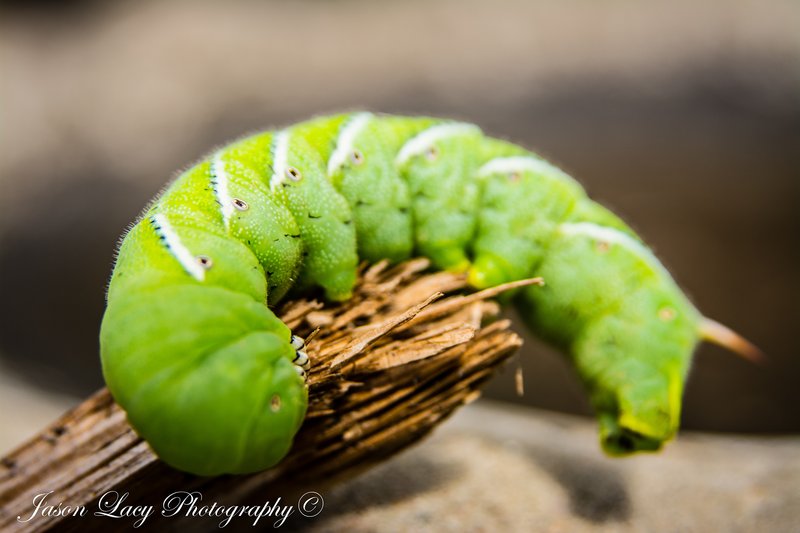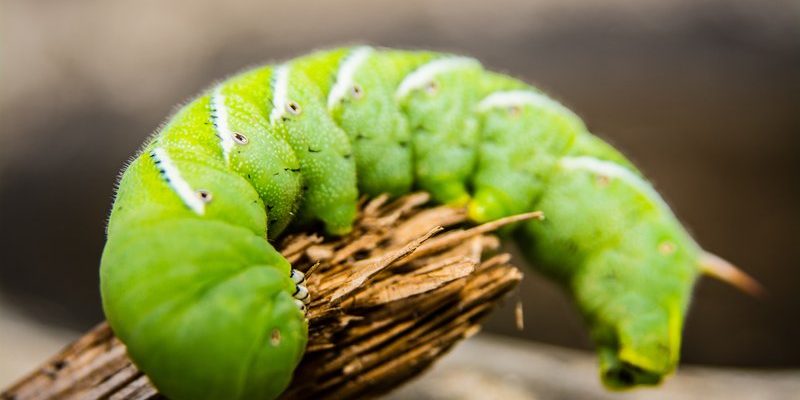
Whether you’re a teacher looking to integrate some hands-on learning for your students or just someone curious about the life cycle of these little green guys, documenting hornworm behavior can offer incredible insights into their ecology and development. In this article, we’ll explore how to observe and record hornworm behavior effectively, providing a step-by-step guide to help you along the way.
What are Hornworms?
Hornworms are the larvae of large moths, specifically the *Manduca sexta* and *Manduca quinquemaculata*. You might also know them as tomato hornworms or tobacco hornworms, depending on their preferred diet. They can grow up to four inches long and are usually bright green, making them well-camouflaged against the plants they feed on.
These caterpillars can be a gardener’s nightmare when they munch on vegetables, but their transformation into moths is a stunning process. The hornworm begins life as a tiny egg, hatches into a ravenous caterpillar, and eventually pupates before emerging as a beautiful moth. Documenting their behavior can give you a front-row seat to this fascinating transformation.
Here’s a fun fact: hornworms have a horn-like structure at their rear, which some believe serves as a defense mechanism against predators. So, while they might seem harmless, they’ve been equipped with some tricks for survival!
Why Document Hornworm Behavior?
You might be wondering, “Why should I take the time to observe hornworm behavior?” Well, documenting their actions can provide valuable teaching moments about life cycles, ecosystems, and even the importance of biodiversity. Observing hornworms can also foster curiosity and a love for nature, especially in children.
When you watch these caterpillars eating, moving, and even pupating, you unlock a plethora of questions to explore: What do they eat? How do they communicate? What environmental factors influence their behavior? Each observation can lead to new learning opportunities.
Plus, keeping a record of their behavior can help you notice changes in their patterns. Are they more active during certain times of day? Do they react when disturbed? These insights can be critical for anyone studying entomology or simply wanting to understand more about the natural world.
How to Start Observing Hornworm Behavior
Getting started with your hornworm observations is easier than you might think. First, you’ll want to gather your supplies. Here’s a quick list to help you out:
- A field journal for notes and sketches
- A camera to capture their behavior
- Magnifying glass for close-up observation
- Plants they like to eat, such as tomatoes or tobacco
Once you have your supplies, choose a location. Ideally, find a garden or an area where these critters are known to thrive. Early morning is often the best time for observing hornworms. Not only are they more active, but the cooler temperatures can make them less shy.
Record everything you see—how they eat, move, and interact with their environment. You could even set up a small observation area to minimize disturbances. The key is to be patient and allow them to behave naturally.
Documenting Eating Habits
One of the most interesting behaviors to document is how hornworms eat. These caterpillars are voracious herbivores, capable of consuming an impressive amount of foliage. It’s fascinating to watch how they maneuver around a leaf, skillfully navigating the plant while chomping down.
To document this behavior effectively, try to observe and note the following:
– Time of Day: Are they more active in the morning or evening?
– Favorite Plants: What plants do they seem to prefer?
– Feeding Techniques: Do they eat leaves entirely or leave partial bites?
By keeping track of their eating habits, you’ll begin to see patterns that can inform your understanding of not just hornworms, but also the plants they inhabit.
Observing Movement and Behavior
Hornworms are not just eating machines; they also display unique movement patterns that can be fascinating to observe. When they are in their natural environment, hornworms might wiggle around in search of food or even wriggle away from danger when disturbed.
Pay attention to how they move and where they go. Do they climb to higher leaves? Do they prefer to stay on the underside of leaves for camouflage? Here’s a tip: use your camera to record their movements or even set up a time-lapse video to see how they navigate their environment over time.
Documenting their movements not only enriches your understanding of their behavior but can also provide insight into their survival strategies.
Monitoring Pupation and Transformation
The pupation stage of hornworms is one of the most magical parts of their life cycle. After several weeks of eating, they’ll eventually stop and search for a safe, sheltered spot to undergo metamorphosis. Observing this process is not only educational but also awe-inspiring.
When a hornworm pupates, it often burrows into the soil or hides beneath leaves. Document the behavior leading up to pupation—how they prepare, the location they choose, and how long it takes them to settle down.
Once they’ve pupated, make sure to monitor the changes that happen inside the chrysalis. Although you may not see the transformation directly, noting the time it takes and conditions around them can help you understand their development. This is a real-life demonstration of the life cycle and a perfect opportunity to discuss metamorphosis with students or curious friends.
Sharing Your Findings
Once you’ve gathered all your observations, it’s time to share your findings. Whether you’re a teacher, a student, or just someone who had fun watching hornworms, sharing your observations can ignite interest in the natural world.
Consider creating a presentation or a simple report summarizing your discoveries. You can include sketches, photographs, and notes about their behavior. If you’re comfortable, share your findings online through social media or a blog.
Sharing your experiences not only contributes to the community but can also inspire others to observe and document the world around them. You never know—your work might motivate someone else to explore the fascinating life of hornworms!
Documenting hornworm behavior can be a rewarding experience that opens up a world of learning about ecology, biology, and the beauty of transformation. Whether you’re doing it for educational purposes or simply out of curiosity, observing these caterpillars can help you connect with nature in a deeper way. So grab your notebook and camera, and start your observation journey today! You might just find that there’s more to these little green critters than meets the eye. Happy observing!

